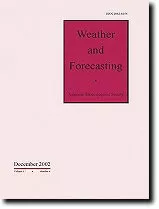- | Academic & Student Programs Academic & Student Programs
- | Journal Articles Journal Articles
- |
Tornado Warnings, Lead Times, and Tornado Casualties: An Empirical Investigation
Originally published in Weather and Forecasting
Conventional wisdom holds that improved tornado warnings will reduce tornado casualties, because longer lead times on warnings provide extra opportunities to alert residents who can then take precautions. The relationship between warnings and casualties is examined using a dataset of tornadoes in the contiguous United States between 1986 and 2002.

Conventional wisdom holds that improved tornado warnings will reduce tornado casualties, because longer lead times on warnings provide extra opportunities to alert residents who can then take precautions. The relationship between warnings and casualties is examined using a dataset of tornadoes in the contiguous United States between 1986 and 2002. Two questions are examined: Does a warning issued on a tornado reduce the resulting number of fatalities and injuries? Do longer lead times reduce casualties? It is found that warnings have had a significant and consistent effect on tornado injuries, with a reduction of over 40% at some lead time intervals. The results for fatalities are mixed. An increase in lead time up to about 15 min reduces fatalities, while lead times longer than 15 min increase fatalities compared with no warning. The fatality results beyond 15 min, however, depend on five killer tornadoes and consequently are not robust.
read more
Find article at the American Meteorological Society.

